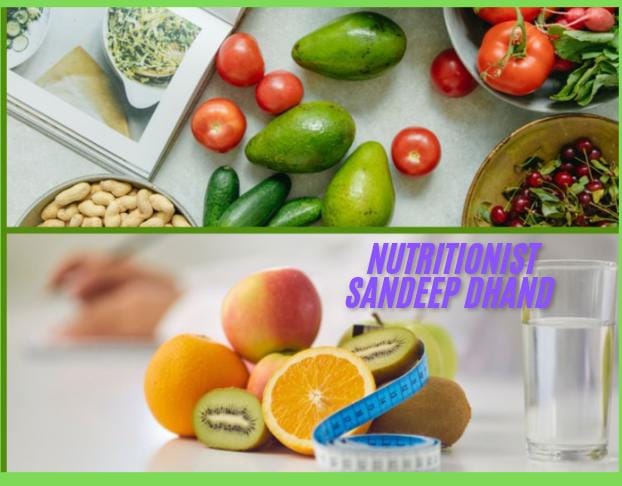Sandeep Dhand
Nutritionist And Health Educator
A well-planned diet can play a crucial role in managing postural hypertension. While medication and lifestyle changes are essential, eating the right foods and avoiding harmful ones can significantly reduce symptoms and complications. Below is a detailed 1000-word guide to creating a balanced nutrition plan specifically tailored for postural hypertension in simple words.
Understanding the Role of Diet in Postural Hypertension

Diet impacts blood pressure regulation in multiple ways, such as:
Controlling sodium levels.
Promoting healthy blood vessel function.
Supporting kidney and heart health.
The goal is to eat foods that stabilize blood pressure while avoiding anything that could cause sudden spikes.
General Guidelines for Diet
- Reduce Salt Intake: High sodium levels can worsen hypertension.
- Stay Hydrated: Drink enough water to avoid dehydration, which can affect blood pressure.
- Focus on Potassium-Rich Foods: Potassium helps balance sodium levels and supports blood pressure control.
- Eat Fiber-Rich Foods: Fiber promotes heart health and reduces the risk of high blood pressure.
- Limit Saturated and Trans Fats: These fats can harm blood vessels and increase the risk of complications.
- Control Portion Sizes: Overeating can lead to weight gain, which increases blood pressure.
Foods to Include in Your Diet

- Fruits
Fruits are rich in potassium, antioxidants, and fiber, which help regulate blood pressure.
Best Choices: Bananas, oranges, kiwis, apples, berries (blueberries, strawberries), watermelon, and avocados.
Benefits: Potassium in fruits counteracts the effects of sodium, while antioxidants reduce inflammation and improve blood vessel health.
- Vegetables
Vegetables provide essential nutrients like magnesium, potassium, and fiber.
Best Choices: Spinach, kale, broccoli, carrots, sweet potatoes, cucumbers, and zucchini.
Tips: Steam or grill vegetables to retain nutrients; avoid adding too much salt.
- Whole Grains
Whole grains are high in fiber and help maintain stable blood pressure levels.
Best Choices: Brown rice, quinoa, whole-wheat bread, oats, and barley.
Benefits: Fiber helps manage weight, reduces cholesterol, and improves heart health.
- Lean Proteins
Protein is essential for maintaining muscle health and overall energy. Choose lean protein sources to avoid excess fat.
Best Choices: Skinless chicken, turkey, fish (like salmon and mackerel), eggs, tofu, and lentils.
Fish Benefits: Fatty fish are rich in omega-3 fatty acids, which improve heart health and reduce inflammation.
- Low-Fat Dairy
Low-fat dairy products are good sources of calcium and vitamin D, which support heart health.
Best Choices: Skim milk, low-fat yogurt, and reduced-fat cheese.
Benefits: Calcium helps relax blood vessels, promoting better blood flow.
- Healthy Fats
Healthy fats support brain and heart health without raising cholesterol levels.
Best Choices: Nuts (almonds, walnuts), seeds (chia seeds, flaxseeds), olive oil, and avocados.
Tips: Use olive oil for cooking instead of butter or margarine.
- Herbs and Spices
Herbs and spices add flavor to your meals without the need for excess salt.
Best Choices: Garlic, ginger, turmeric, cinnamon, basil, and oregano.
Benefits: Some spices, like garlic, have natural blood-pressure-lowering properties.
Foods to Avoid
- Salty Foods
Excess sodium causes water retention, leading to higher blood pressure.
Examples: Packaged snacks (chips, crackers), canned soups, processed meats (bacon, sausages), and fast food.
Tip: Look for low-sodium or salt-free options when shopping.
- Sugary Foods and Drinks
Excess sugar can lead to weight gain and insulin resistance, both of which can worsen hypertension.
Examples: Sweets, sodas, energy drinks, and desserts.
Alternative: Use natural sweeteners like honey or enjoy fruits for sweetness.
- Fried and Processed Foods
These foods are high in unhealthy fats and can damage blood vessels.
Examples: Fried chicken, French fries, and packaged frozen meals.
Alternative: Opt for baked, grilled, or steamed versions.
- Alcohol
Excessive alcohol consumption can raise blood pressure and harm heart health.
Recommendation: Limit to moderate amounts (1 drink/day for women, 2 drinks/day for men).
- Caffeine
Caffeine can cause temporary spikes in blood pressure.
Examples: Coffee, energy drinks, and caffeinated sodas.
Tip: Limit intake to 1-2 cups of coffee per day.
Sample 7-Day Meal Plan for Postural Hypertension
Day 1
Breakfast: Oatmeal with banana slices, walnuts, and a cup of green tea.
Snack: An apple and a handful of almonds.
Lunch: Grilled chicken breast with quinoa and steamed broccoli.
Snack: Low-fat yogurt with blueberries.
Dinner: Baked salmon with a side of spinach and sweet potatoes.
Day 2
Breakfast: Whole-grain toast with avocado and a boiled egg.
Snack: Carrot sticks with hummus.
Lunch: Lentil soup with a mixed greens salad (olive oil dressing).
Snack: A pear and a handful of sunflower seeds.
Dinner: Grilled turkey breast with brown rice and zucchini.
Day 3
Breakfast: Smoothie with spinach, banana, and almond milk.
Snack: Handful of walnuts.
Lunch: Quinoa salad with chickpeas, cucumber, and cherry tomatoes.
Snack: Low-fat cheese and whole-grain crackers.
Dinner: Baked cod with roasted vegetables and mashed sweet potatoes.
Day 4
Breakfast: Scrambled eggs with sautéed spinach and whole-grain toast.
Snack: A handful of mixed nuts.
Lunch: Grilled chicken salad with olive oil and lemon dressing.
Snack: Low-fat yogurt with chia seeds.
Dinner: Vegetable stir-fry with tofu and brown rice.
Day 5
Breakfast: Whole-grain cereal with almond milk and strawberries.
Snack: Celery sticks with peanut butter.
Lunch: Turkey and avocado wrap (whole-wheat tortilla).
Snack: A handful of pistachios.
Dinner: Grilled shrimp with quinoa and steamed asparagus.
Day 6
Breakfast: Smoothie with kale, mango, and Greek yogurt.
Snack: Sliced cucumber with a sprinkle of black pepper.
Lunch: Baked chicken breast with roasted sweet potatoes and green beans.
Snack: A boiled egg.
Dinner: Whole-wheat pasta with marinara sauce and a side of mixed vegetables.
Day 7
Breakfast: Omelet with vegetables (tomatoes, spinach) and a slice of whole-grain toast.
Snack: A handful of raisins and almonds.
Lunch: Grilled salmon salad with olive oil dressing.
Snack: Low-fat yogurt with sliced banana.
Dinner: Baked turkey breast with quinoa and steamed broccoli.
Hydration Tips
Drink 8-10 glasses of water daily.
Include drinks like coconut water, which is rich in potassium.
Avoid sugary and caffeinated beverages.
Conclusion
A well-balanced diet tailored for postural hypertension focuses on whole, natural foods rich in potassium, magnesium, fiber, and healthy fats. Avoid excessive salt, sugar, and unhealthy fats. By following the guidelines and sample meal plan provided, you can effectively manage postural hypertension and support overall health. Always consult a healthcare professional or dietitian before making significant dietary changes.
